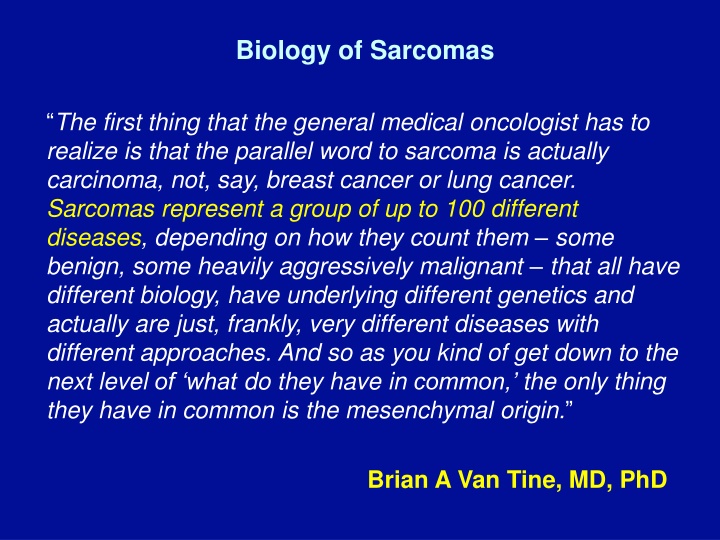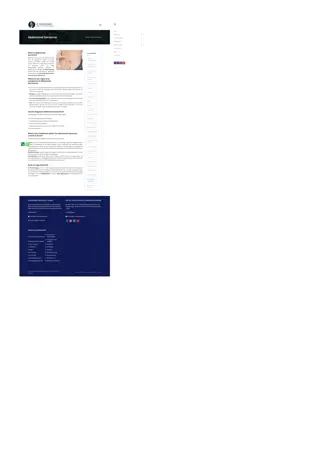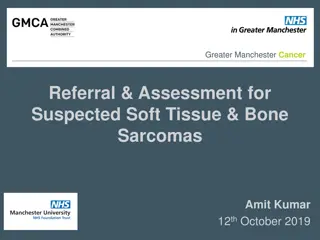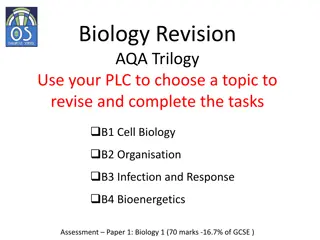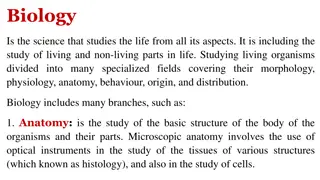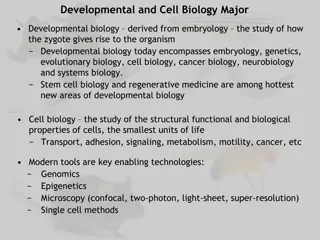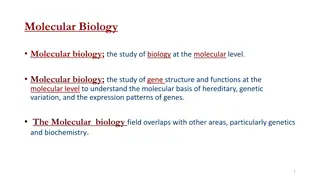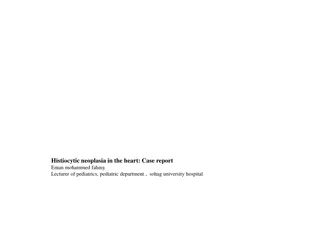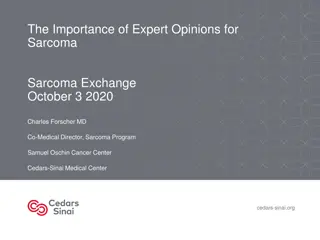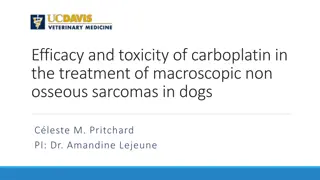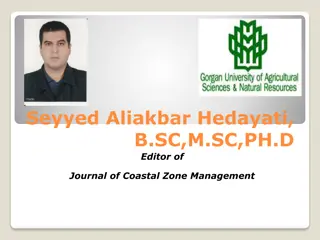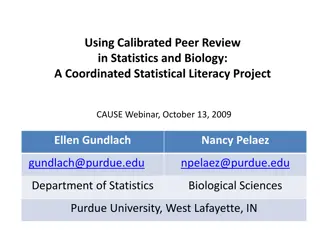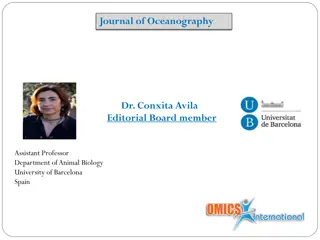Insights into Sarcomas: Biology, Management, Results
Sarcomas, a diverse group of mesenchymal-origin cancers, require a multidisciplinary approach for effective management. Learn about different treatment options, ongoing trials, and the importance of personalized therapies. Explore the biology, challenges, and advancements in sarcoma care.
Download Presentation

Please find below an Image/Link to download the presentation.
The content on the website is provided AS IS for your information and personal use only. It may not be sold, licensed, or shared on other websites without obtaining consent from the author.If you encounter any issues during the download, it is possible that the publisher has removed the file from their server.
You are allowed to download the files provided on this website for personal or commercial use, subject to the condition that they are used lawfully. All files are the property of their respective owners.
The content on the website is provided AS IS for your information and personal use only. It may not be sold, licensed, or shared on other websites without obtaining consent from the author.
E N D
Presentation Transcript
Biology of Sarcomas The first thing that the general medical oncologist has to realize is that the parallel word to sarcoma is actually carcinoma, not, say, breast cancer or lung cancer. Sarcomas represent a group of up to 100 different diseases, depending on how they count them some benign, some heavily aggressively malignant that all have different biology, have underlying different genetics and actually are just, frankly, very different diseases with different approaches. And so as you kind of get down to the next level of what do they have in common, the only thing they have in common is the mesenchymal origin. Brian A Van Tine, MD, PhD
Management of Sarcomas One would not administer a single agent for prostate, lung and breast cancer as a whole and expect to see a lot of activity. However, this is what has been traditionally done in sarcoma with agents like doxorubicin, resulting in low response rates. Brian A Van Tine, MD, PhD
Management of Sarcomas One would not administer a single agent for prostate, lung and breast cancer as a whole and expect to see a lot of activity. However, this is what has been traditionally done in sarcoma with agents like doxorubicin, resulting in low response rates. According to the NCCN Guidelines, Prior to the initiation of therapy, all patients should be evaluated and managed by a multidisciplinary team with expertise and experience in sarcoma. I believe that this is really important. Brian A Van Tine, MD, PhD
Results from the Phase II Trial of Olaratumab and Doxorubicin in Sarcoma Olaratumab until progression Olaratumab + doxorubicin (n = 66) Eligibility (n = 133) Advanced soft tissue sarcoma R ECOG PS 2 Optional olaratumab until progression Doxorubicin (n = 67) No previous anthracycline p-value Outcome Olaratumab + doxorubicin Doxorubicin HR Median OS 26.5 mo 14.7 mo 0.46 0.0003 OS = overall survival Phase III ANNOUNCE trial of olaratumub/doxorubicin is ongoing Tap WD et al. Lancet 2016;388(10043):488-97.
Treatment Options for Sarcoma Stage I sarcoma tumors are usually more appropriate for surgery. In Stage II and III sarcoma, the first question is diagnosis. Depending on the diagnosis, treatment may involve neoadjuvant therapy, radiation therapy and/or surgery. This is why experience with multidisciplinary team planning of the appropriate treatment approach is so important. For Stage IV disease, several questions need to be answered, such as the type of Stage IV sarcoma, how extensive the disease is and how therapy can be personalized. Brian A Van Tine, MD, PhD
Mechanism of Action of Trabectedin Trabectedin is a marine alkaloid isolate with a chemical structure characterized by 3 fused tetrahydroisoquinoline rings: Two of these rings provide the framework for covalent interaction with the minor groove of the DNA double helix. The third ring protrudes from the DNA duplex, apparently allowing interactions with adjacent nuclear proteins. Several clinical studies of the combination of trabectedin with other anticancer agents are ongoing. D'Incalci M, Galmarini CM. Mol Cancer Ther 2010;9(8):2157-63.
Phase III ET743-SAR-3007 Trial: Incidence of Select Adverse Events with Trabectedin for Metastatic Liposarcoma or Leiomyosarcoma After Chemotherapy Trabectedin (n = 340) Dacarbazine (n = 155) All grades Grade 3 or 4 All grades Grade 3 or 4 Neutropenia 49% 37% 29% 21% ALT increase 45% 26% 6% 1% Anemia 39% 14% 29% 12% AST increase 35% 13% 5% 0% Thrombocytopenia 30% 17% 36% 18% Blood alkaline phosphatase increase 20% 1% 7% 0 Demetri GD et al. J Clin Oncol 2016;34(8):786-93.
ET743-SAR-3007: Trial Schema and Results Eligibility (n = 518) Advanced liposarcoma or leiomyosarcoma Trabectedin (n = 345) R Failure of an anthracycline and 1 additional systemic regimen Dacarbazine (n = 173) p-value Survival Trabectedin Dacarbazine HR Median OS 12.4 mo 12.9 mo 0.87 0.37 Median PFS 4.2 mo 1.5 mo 0.55 <0.001 Demetri GD et al. J Clin Oncol 2016;34(8):786-93.
ET743-SAR-3007 and E7389-G000-309 Phase III Trials for Patients with Soft Tissue Sarcomas Trabectedin (n = 345) Dacarbazine (n = 173) p-value ET743-SAR-30071 HR Median OS 12.4 mo 12.9 mo 0.87 0.37 Median PFS 4.2 mo 1.5 mo 0.55 <0.001 Eribulin (n = 228) Dacarbazine (n = 224) p-value E7389-G000-3092 HR Median OS 13.5 mo 11.5 mo 0.77 0.0169 Median PFS 2.6 mo 2.6 mo 0.88 0.23 E7389-G000-309 trial2: Median OS with eribulin versus dacarbazine was longer for patients with liposarcoma (median OS 15.6 vs 8.4 mo) than for those with leiomyosarcoma (12.7 vs 13.0 mo). 1 Demetri GD et al. J Clin Oncol 2016;34(8):786-93; 2 Schoffski P et al. Lancet 2016;387(10028):1629-37.
Results from the REGOSARC Phase II Trial for Advanced Soft Tissue Sarcomas p-value Regorafenib n = 20 Placebo n = 23 HR Liposarcomas Median PFS 1.1 mo 1.7 mo 0.89 0.70 Leiomyosarcomas n = 28 n = 28 Median PFS 3.7 mo 1.8 mo 0.46 0.0045 Synovial sarcomas n = 13 n = 14 Median PFS 5.6 mo 1.0 mo 0.10 <0.0001 Other sarcomas n = 28 n = 27 Median PFS 2.9 mo 1.0 mo 0.46 0.0061 Mir O et al. Lancet Oncol 2016;17(12):1732-42.
Perspective on the Utility of Pazopanib in the Management of Sarcoma I think pazopanib is a really useful drug. I think it s got some dosing complications in the soft tissue sarcoma realm that I think are soon to be addressed with new trials. But I think it causes diarrhea. I think it causes fatigue. And I think that there s a hepatotoxicity that has a black box warning. But beyond that, if you can get the dosing right I personally use a dose escalation that s not on label to get the tolerability in my patients to where it needs to be. I think it s a good drug. And there is a subset of patients where that is a really good drug. Brian A Van Tine, MD, PhD
Results from the Phase II Trial of Olaratumab and Doxorubicin in Sarcoma Olaratumab until progression Olaratumab + doxorubicin (n = 66) Eligibility (n = 133) Advanced soft tissue sarcoma R ECOG PS 2 Optional olaratumab until progression Doxorubicin (n = 67) No previous anthracycline p-value Outcome Olaratumab + doxorubicin Doxorubicin HR Median OS 26.5 mo 14.7 mo 0.46 0.0003 Tap WD et al. Lancet 2016;388(10043):488-97.
Ongoing Phase III ANNOUNCE Trial Schema Olaratumab until progression Eligibility (n = 460) Advanced unresectable soft tissue sarcoma Olaratumab + doxorubicin R ECOG PS 1 Placebo until progression Placebo + doxorubicin No previous anthracycline therapy Primary endpoint: Overall survival www.clinicaltrials.gov. NCT02451943 (Accessed April 2017).
Phase II Trial: Select Side Effects of Olaratumab/Doxorubicin versus Doxorubicin Alone Olaratumab/doxorubicin (n = 64) Doxorubicin (n = 65) Event Nausea Any grade 73% Any grade 52% Grade 3 Grade 3 2% 3% Neutropenia 58% 53% 35% 33% Mucositis 53% 3% 35% 5% Vomiting 45% 0% 18% 0% Diarrhea 34% 3% 23% 0% Febrile neutropenia 13% 13% 14% 14% Tap WD et al. Lancet 2016;388(10043):488-97.
Risk Factors and Types of Sarcoma Risk factors that predispose to sarcoma: Li-Fraumeni syndrome Adults with a childhood history of retinoblastoma Several other genetic syndromes Types of sarcoma: Genetically complex sarcomas, including undifferentiated pleomorphic sarcomas and leiomyosarcoma Genetically simple translocation-associated sarcomas, including myxoid/round cell liposarcoma, synovial sarcoma and alveolar soft part sarcoma Others, such as dedifferentiated liposarcoma Seth M Pollack, MD
Case Discussion A 55-year-old woman with Li-Fraumeni syndrome History of sarcoma: 2 sarcoma diagnoses as a child and as an adolescent Previous anthracycline-based chemotherapy, radiation therapy and several surgical procedures At 53, she developed a 12-cm high-grade, unresectable dedifferentiated liposarcoma in her mediastinum What are the therapeutic options?
Case Discussion A 55-year-old woman with Li-Fraumeni syndrome History of sarcoma: 2 sarcoma diagnoses as a child and as an adolescent Previous anthracycline-based chemotherapy, radiation therapy and several surgical procedures At 53, she developed a 12-cm high-grade, unresectable dedifferentiated liposarcoma in her mediastinum Patient received trabectedin on the expanded access trabectedin trial
Case Discussion A 55-year-old woman with Li-Fraumeni syndrome History of sarcoma: 2 sarcoma diagnoses as a child and as an adolescent Previous anthracycline-based chemotherapy, radiation therapy and several surgical procedures At 53, she developed a 12-cm high-grade, unresectable dedifferentiated liposarcoma in her mediastinum Trabectedin x 16 on the expanded access trabectedin trial stable disease (SD) with several tolerability issues eribulin and SD for 12 months disease progression
Phase III E7389-G000-309 Trial for Patients with Soft Tissue Sarcoma Eribulin (n = 228) Dacarbazine (n = 224) p-value Outcome HR Median OS 13.5 mo 11.5 mo 0.77 0.0169 Median PFS 2.6 mo 2.6 mo 0.88 0.23 Median OS with eribulin versus dacarbazine was longer for patients with liposarcoma than for those with leiomyosarcoma: Liposarcoma 15.6 mo versus 8.4 mo Leiomyosarcoma 12.7 mo versus 13.0 mo Schoffski P et al. Lancet 2016;387(10028):1629-37.
Phase III ET743-SAR-3007 Trial Results Eligibility (n = 518) Advanced liposarcoma or leiomyosarcoma Trabectedin (n = 345) R Failure of an anthracycline and 1 additional systemic regimen Dacarbazine (n = 173) p-value Survival Trabectedin Dacarbazine HR Median OS 12.4 mo 12.9 mo 0.87 0.37 Median PFS 4.2 mo 1.5 mo 0.55 <0.001 Demetri GD et al. J Clin Oncol 2016;34(8):786-93.
Results form the Phase II Trial of Olaratumab and Doxorubicin in Sarcoma Olaratumab until progression Olaratumab + doxorubicin (n = 66) Eligibility (n = 133) Advanced soft tissue sarcoma R ECOG PS 2 Optional olaratumab until progression Doxorubicin (n = 67) No previous anthracycline p-value Outcome Olaratumab + doxorubicin Doxorubicin HR Median OS 26.5 mo 14.7 mo 0.46 0.0003 Median PFS 6.6 mo 4.1 mo 0.67 0.0615 Tap WD et al. Lancet 2016;388(10043):488-97.
Phase II Trial: Select Side Effects of Olaratumab/Doxorubicin versus Doxorubicin Alone Olaratumab/Doxorubicin (n = 64) Doxorubicin (n = 65) Event Nausea Fatigue Neutropenia Anemia Leukopenia Diarrhea Any grade 73% 69% 58% 41% 41% 34% Any grade 52% 69% 35% 37% 18% 23% Grade 3 2% 9% 53% 13% 36% 3% Grade 3 3% 3% 33% 9% 17% 0% Tap WD et al. Lancet 2016;388(10043):488-97.
Ongoing Phase III ANNOUNCE Trial Schema Olaratumab until progression Eligibility (n = 460) Advanced unresectable soft tissue sarcoma Olaratumab + doxorubicin R ECOG PS 1 Placebo until progression Placebo + doxorubicin No previous anthracycline therapy Primary endpoint: Overall survival Secondary endpoints includePFS, response and quality of life www.clinicaltrials.gov. NCT02451943 (Accessed April 2017).
SARC 028: A Phase II Trial of the Anti-PD-1 Antibody Pembrolizumab in Advanced Soft Tissue Sarcoma 40 patients with soft tissue sarcoma enrolled on study Sarcoma type PR SD Undifferentiated pleomorphic sarcoma (n = 9) 4 (44%) 3 (33%) Liposarcoma (n = 9) 2 (22%) 4 (44%) Synovial sarcoma (n = 9) 1 (11%) 2 (22%) Leiomyosarcoma (n = 10) 0 6 (60%) Three patients have not reached first scan assessment. Abdul-Hassan H et al. Proc ASCO 2016;Abstract 11006.
